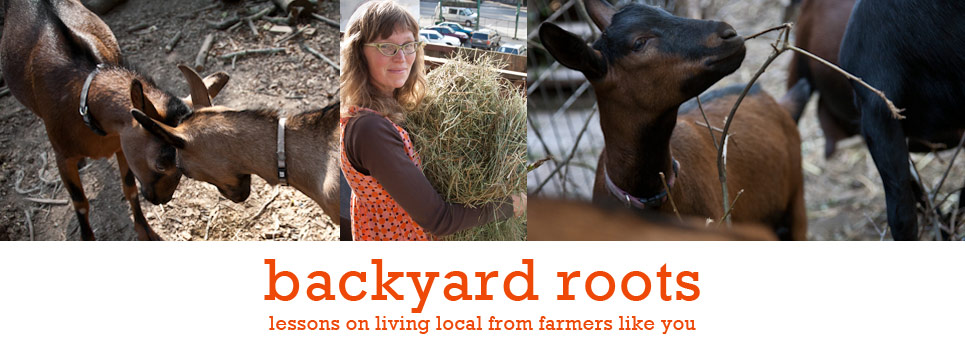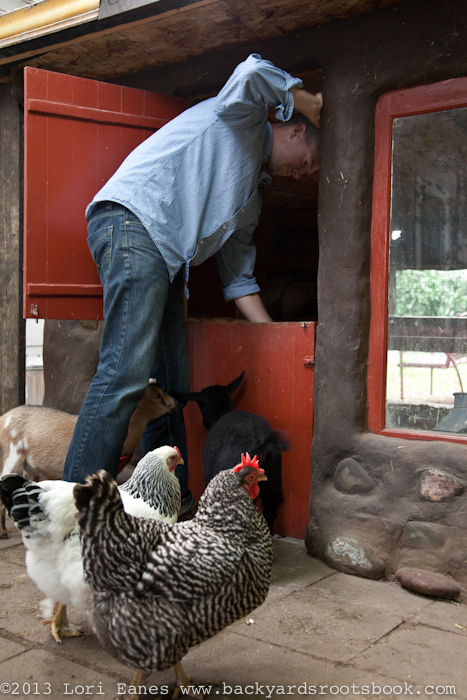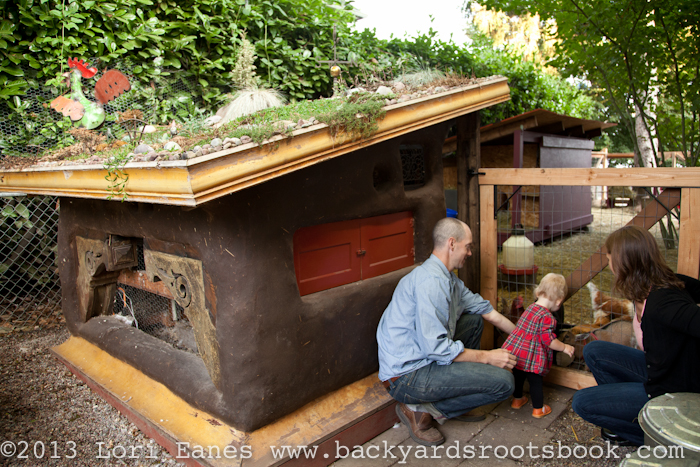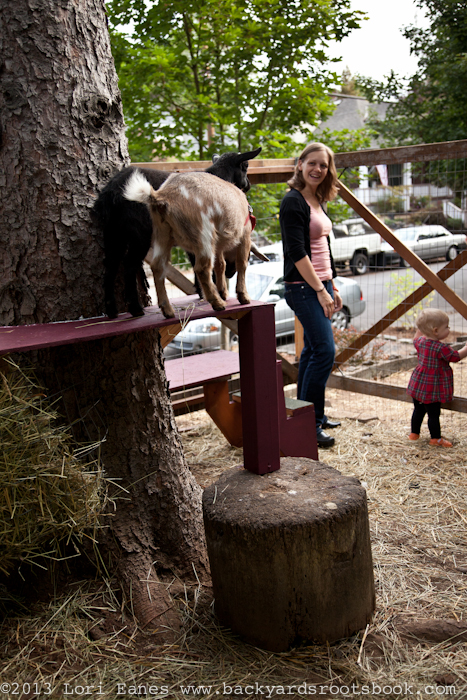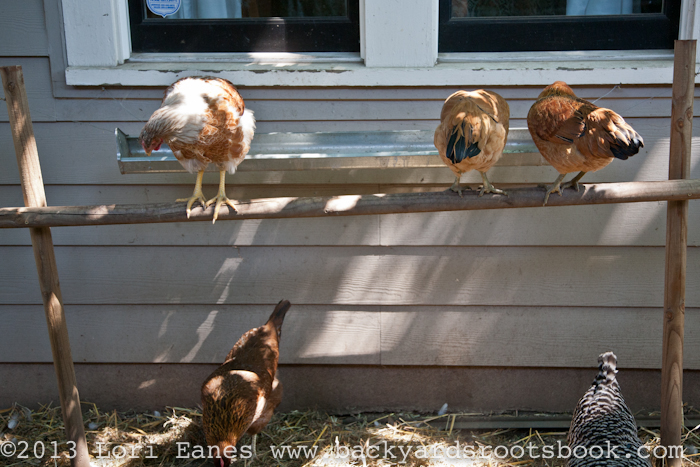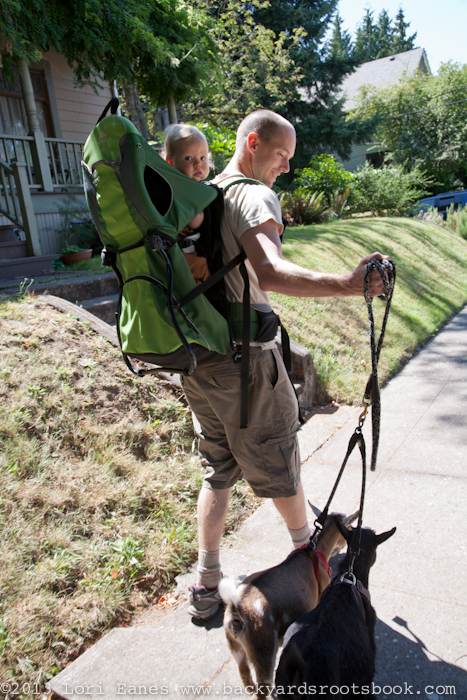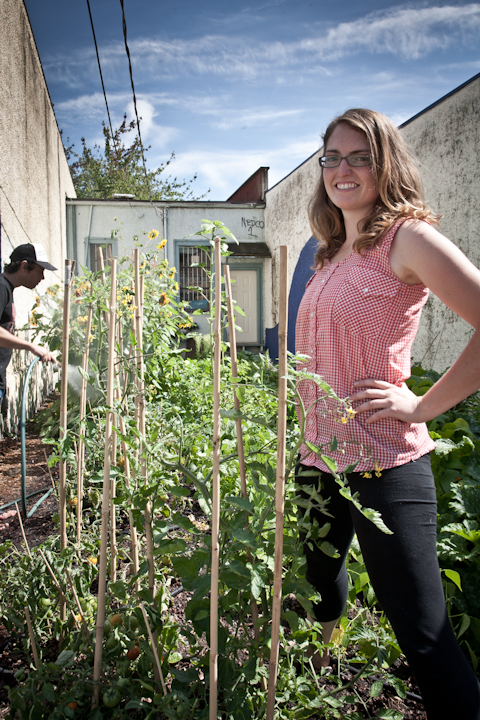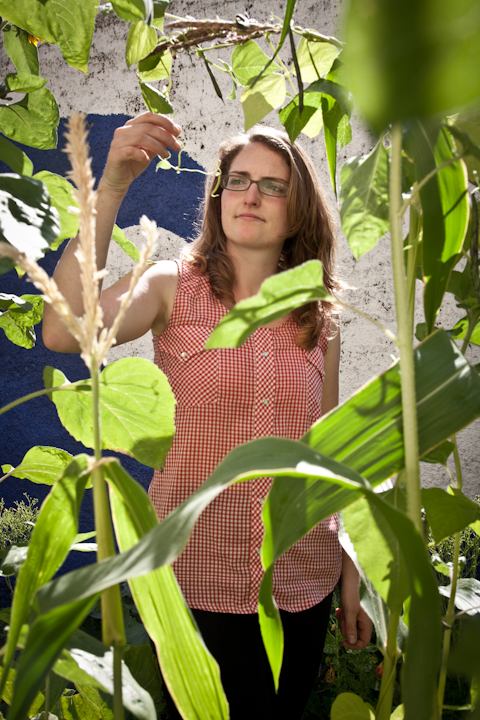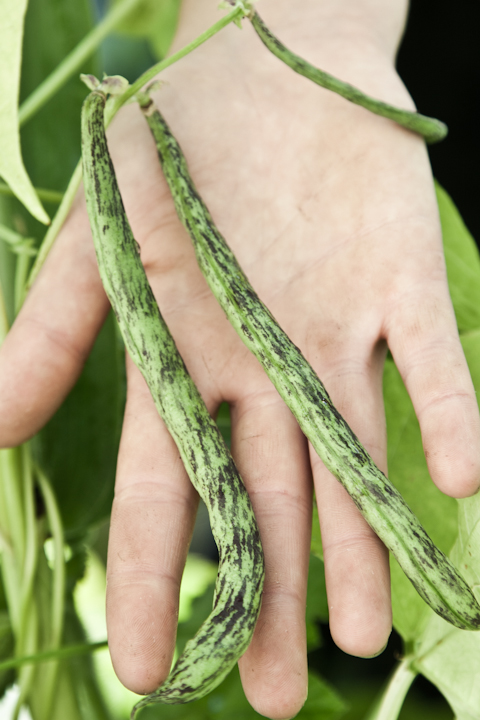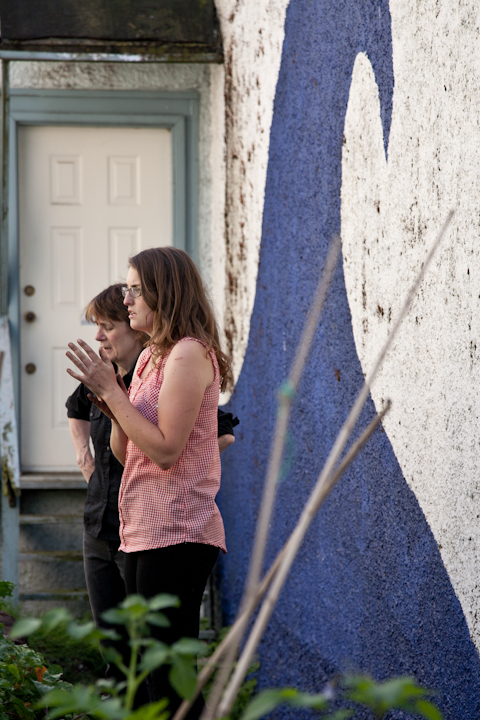When I saw John Thornton’s cob chicken coop I knew I had to go visit. You really can’t find a more basic building material than cob. It’s an ages old building technique that uses earth, clay and straw. His coop is much more than just cob though. He creatively incorporates recycled windows, doors and a green roof into his design that kind of looks like hobbits should be coming out the front door.
John has also found raising chickens to be an effective therapy tool at his job working with teenagers with behavioral and chemical dependencies. He’s says a lot of the kids have an “empathy disconnect” and teaching them how to care and nurture for an animal is a way to reach them. For the project he had each teenager raise a chick from turning the egg each day while in the incubation stage and then caring for them as they grew. He knew the project was successful when one of the teenagers, who before the program had a hard time expressing any emotion, cried when his chick died.
Having chickens at home was a way to produce food in his yard that was too shady for growing vegetables. He joined a local Portland CSA called Backyard Bounty (it will be an upcoming post) and he barters his eggs to help offset the CSA costs. When I visited he had just added two baby goats. He looks forward to a future of goat milk.
